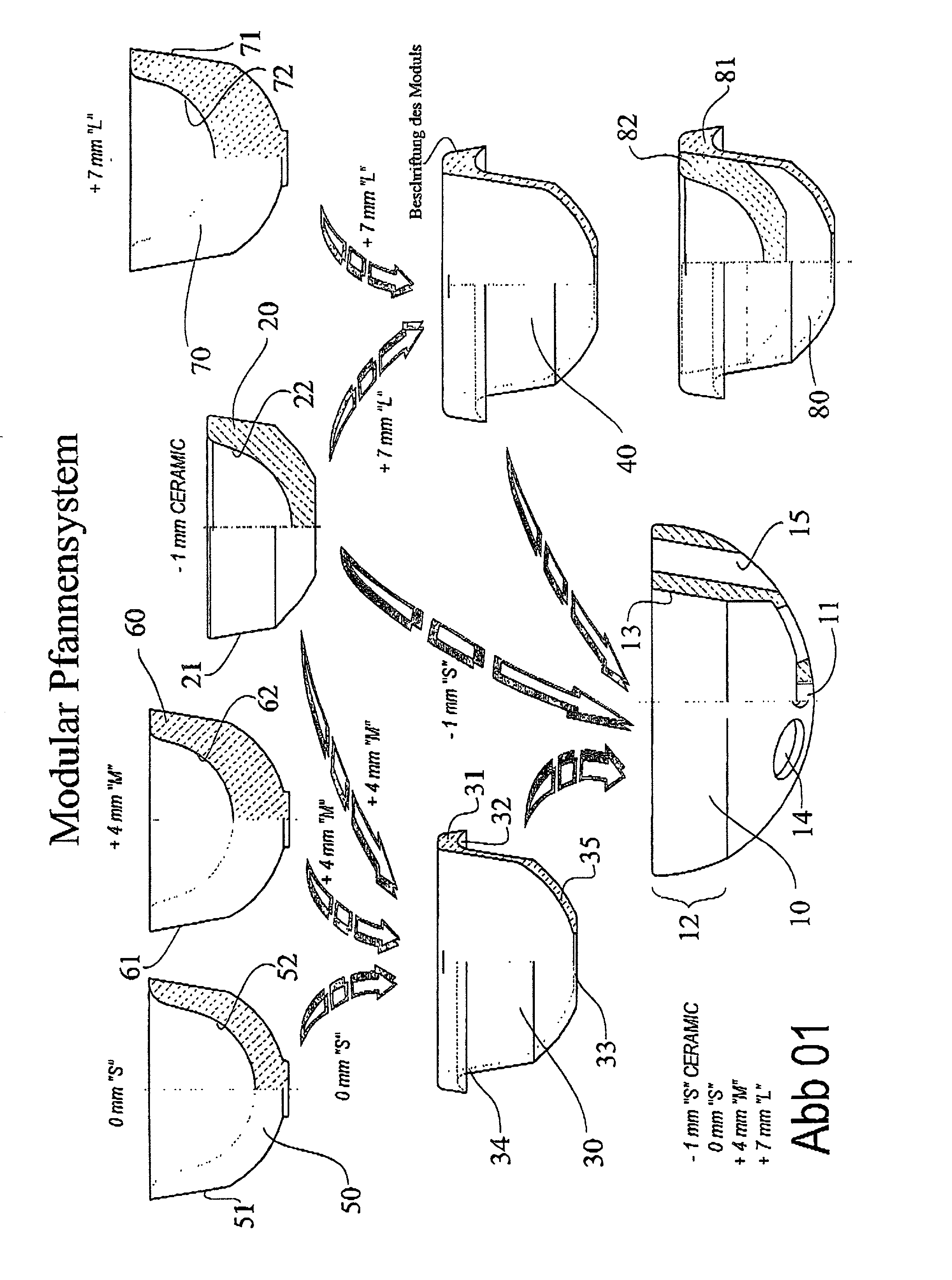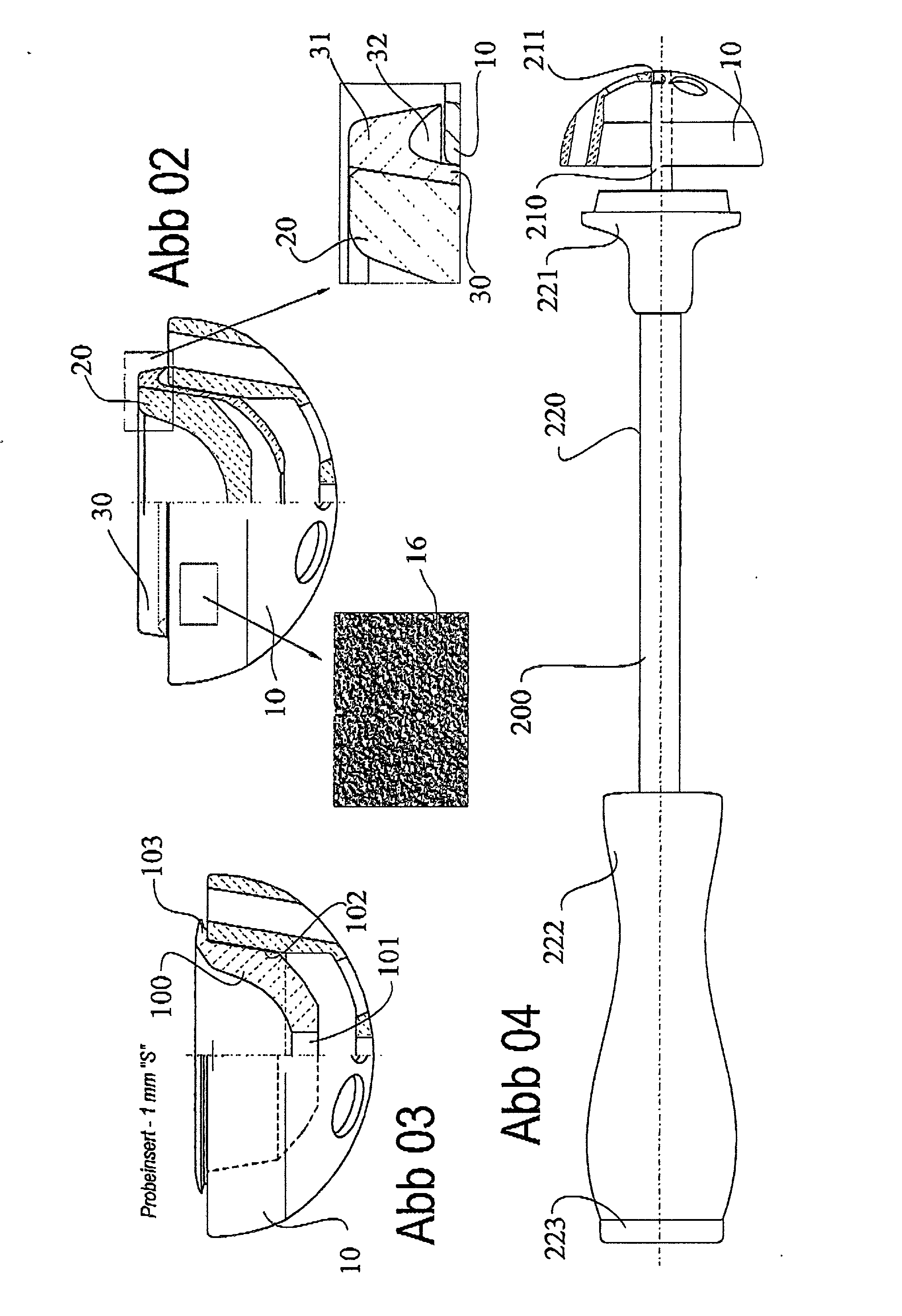Modular socket prosthesis
a technology of modular sockets and sockets, applied in the field of modular socket prosthesis, can solve the problems of insufficient anchorage of hourglass connections, insufficient rigidity of bone structure and anchorage, so-called interlocking
- Summary
- Abstract
- Description
- Claims
- Application Information
AI Technical Summary
Benefits of technology
Problems solved by technology
Method used
Image
Examples
example
[0017] A patient having advanced coxarthrosis is positioned on the operating table in the usual manner and, after the surgical area has been covered and prepared using sterile techniques, the hip joint is exposed, for example by means of a lateral access, the capsule is opened, the femur is dislocated, and the head of the femur is removed and lifted away. Following this, the hip socket is adjusted and the cartilage is removed using a sharp ruffle fluted cutter.
[0018] As soon as the bone has been exposed, the fluted cutter is replaced with a diamond cutter and, using the same size as the head, the bed is ground open spherically. The next larger size diamond grinder is used to cut down to the bottom of the socket until the edge of the spherical hollow grinding tool disappears into the socket. A titanium shell is now screwed on to the setting instrument (FIG. 04), and the setting instrument is positioned in the ground-out bed of the socket and is hammered into place in the bone bed in ...
PUM
 Login to View More
Login to View More Abstract
Description
Claims
Application Information
 Login to View More
Login to View More - R&D
- Intellectual Property
- Life Sciences
- Materials
- Tech Scout
- Unparalleled Data Quality
- Higher Quality Content
- 60% Fewer Hallucinations
Browse by: Latest US Patents, China's latest patents, Technical Efficacy Thesaurus, Application Domain, Technology Topic, Popular Technical Reports.
© 2025 PatSnap. All rights reserved.Legal|Privacy policy|Modern Slavery Act Transparency Statement|Sitemap|About US| Contact US: help@patsnap.com



